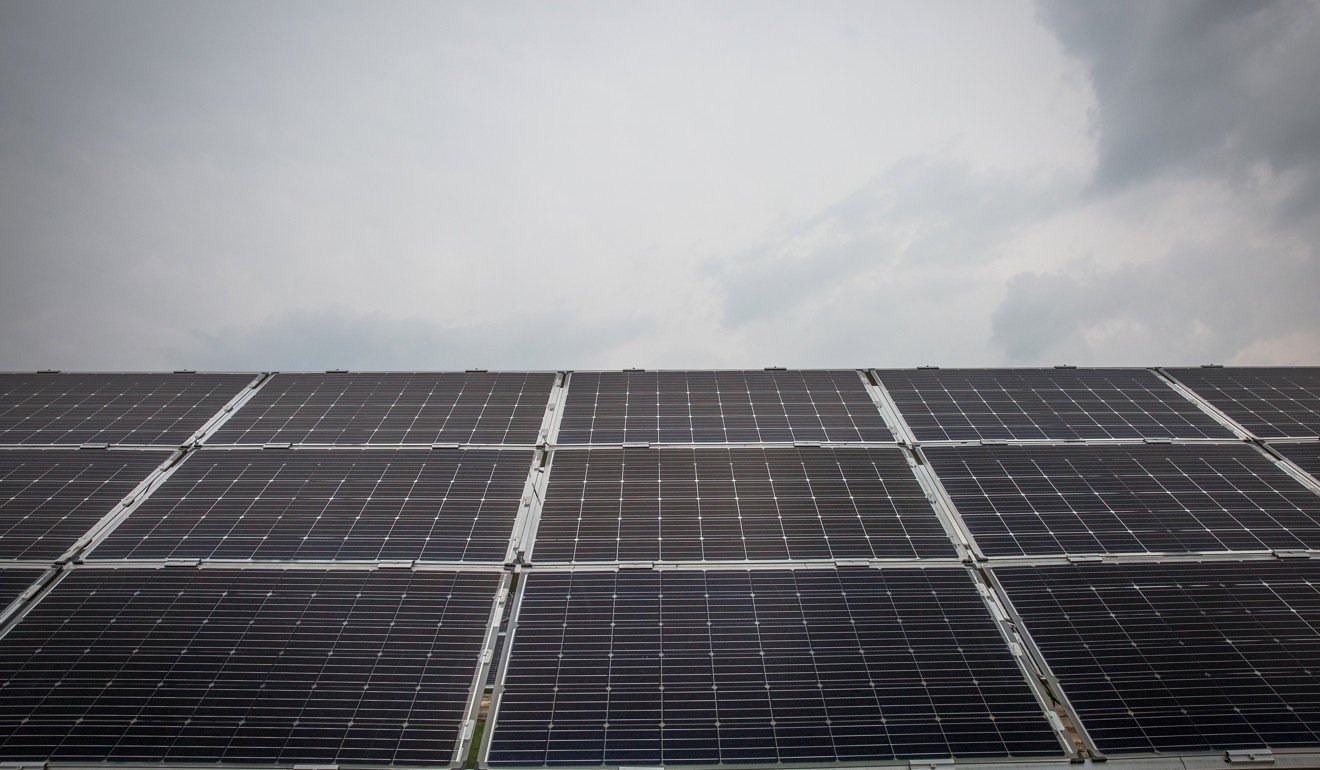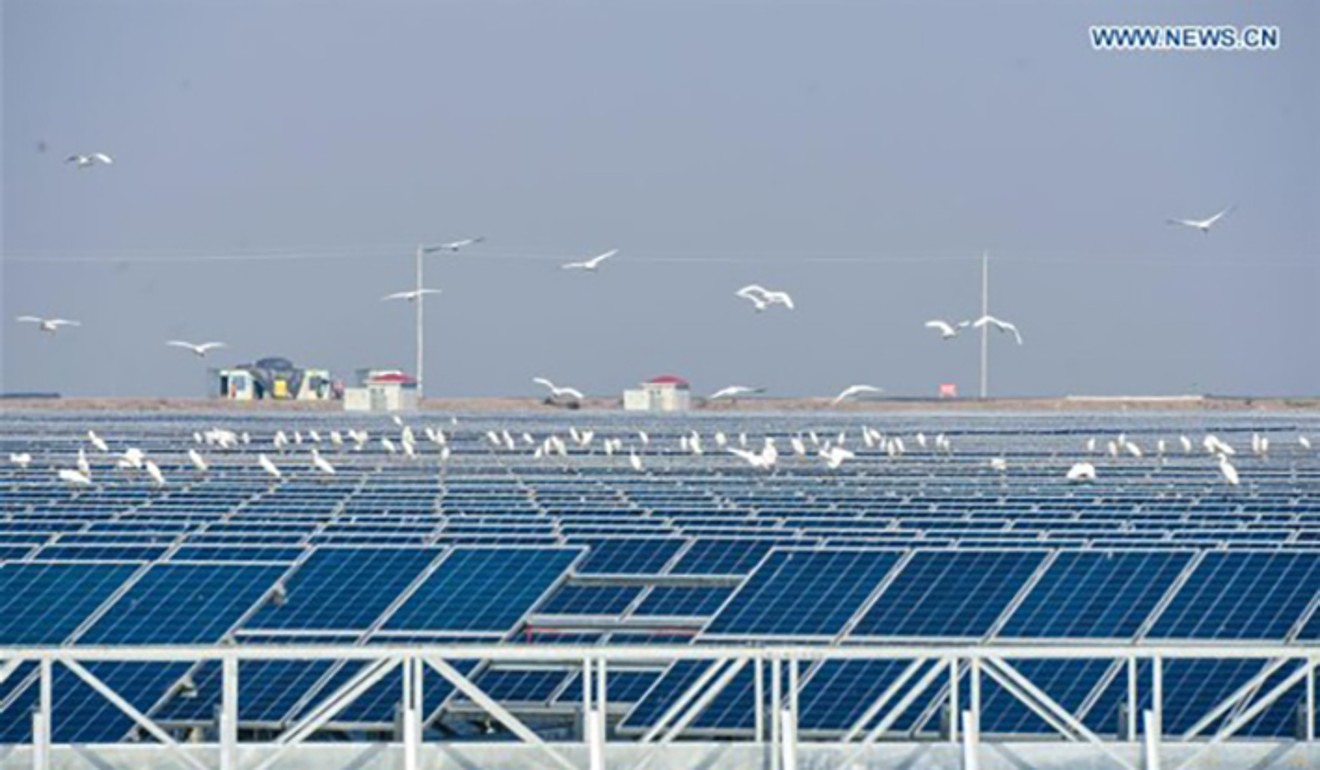
China’s ageing solar panels are going to be a big environmental problem
The issue of how to dispose of hazardous waste from ageing panels casts a shadow over the drive towards renewable energy and away from fossil fuels
China will have the world’s worst problem with ageing solar panels in less than two decades, according to a recent industry estimate.
Lu Fang, secretary general of the photovoltaics decision in the China Renewable Energy Society, wrote in an article circulating on mainland social media this month that the country’s cumulative capacity of retired panels would reach up to 70 gigawatts (GW) by 2034.
That is three times the scale of the Three Gorges Dam, the world’s largest hydropower project, by power production.
By 2050 these waste panels would add up to 20 million tonnes, or 2,000 times the weight of the Eiffel Tower, according to Lu.
“In fair weather, prepare for foul,” she warned.
Lu could not be immediately reached for comment. A staff member from the society, which was formerly known as the Chinese Solar Energy Society, confirmed that the figures were in a report presented by Lu at an industrial conference in Xian, Shaanxi in May.
China currently hosts the world’s largest number of solar power plants with a total capacity of close to 80GW last year, according to the International Energy Agency. The installation in China is nearly twice the amount of the US.
Nearly half of the nation’s total capacity was added last year. Industrial experts have also predicted that new solar farms completed this year will exceed 2016’s record, according to Bloomberg.

This neck-breaking pace was driven by government’s drive to diversify the country’s energy supply structure, which at present relies heavily on fossil fuels such as coal and imported oil.
But the solar plants are relatively short-lived, and the government does not have any retirement plan for them yet.
A panel’s lifespan ranges from 20 to 30 years, depending on the environment in which they are used, according to the US Department of Energy. High temperatures can accelerate the ageing process for solar cells, while other negative factors – such as the weight of snow or dust storms – could cause material fatigue on the surface and internal electric circuits, gradually reducing the panel’s power output.
Tian Min, general manager of Nanjing Fangrun Materials, a recycling company in Jiangsu province that collects retired solar panels, said the solar power industry was a ticking time bomb.
“It will explode with full force in two or three decades and wreck the environment, if the estimate is correct,” he said.
“This is a huge amount of waste and they are not easy to recycle,” Tian added.

A solar panel contains metals such as lead and copper and also has an aluminium frame. The solar cells are made up of pure, crystallised silicon wrapped under a thick layer of plastic membrane for protection.
In Europe, some companies are reported to have developed sophisticated technology to reclaim more than 90 per cent of the materials.
But the western technology might face a hard sell in China, according to Tian.
China’s solar power plants are mostly located in poor, remote regions such as the Gobi in Inner Mongolia, while the majority of recycling industries are in developed areas along the Pacific coast.
Transporting these bulky panels over long distances could be very costly, Tian said.
Another cost comes from separating and purifying the waste materials, an industrial process that not only requires plenty of labour and electricity input, but also chemicals such as acids that could cause harm to the environment.
“If a recycling plant carries out every step by the book to achieve low pollutant emission, their products can end up being more expensive than new raw materials,” he said.

The cost of a kilogram of silicon crystal stands at about US$13 this year. The price is expected to drop by 30 per cent over the next decade, according to industrial estimates. This would make recycled silicon even harder to sell, according to Tian.
A sales manager of a solar power recycling company believes there could be a way to dispose of China’s solar junk, nonetheless.
“We can sell them to Middle East,” said the manager who requested not to be named.
“Our customers there make it very clear that they don’t want perfect or brand new panels. They just want them cheap,” he said.
“They are re-selling these panels to household users living in deserts. There, there is lots of land to install a large amount of panels to make up for their low performance,” the manager added.
“Everyone is happy with the result,” he added.

